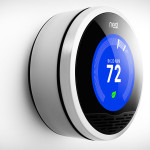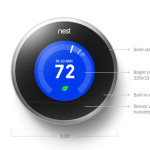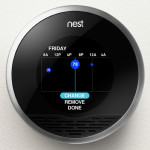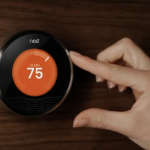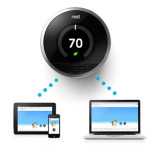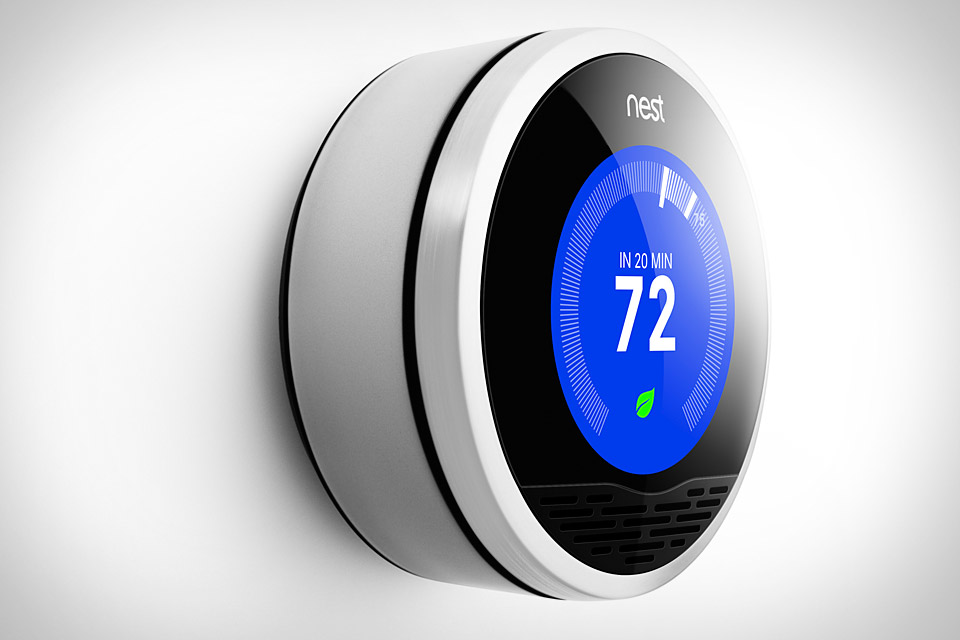Tony Fadell helped design the iPod and he ran the iPod and iPhone divisions of Apple for years. Nest has decided to reinvent a tech item that hasn’t seen much innovation in decades: the thermostat. According to Nest, there are a quarter of a billion thermostats in this country alone; 10 million more are bought each year.
Half of your home’s energy is controlled by this ugly, beige tool. Most people never even bother to program their programmable thermostats. As a result, their houses actually use more energy than homes without them. Two years ago, the federal government eliminated the entire programmable thermostat category from its Energy Star program.
The Nest Learning Thermostat ($250) doesn’t introduce just one radical rethinking of the thermostat; it introduces four of them.
1
The Nest is round and sleek, its screen is slightly domed glass with a mirror finished barrel that reflects your wall. Its color screen glows orange when it’s heating, blue when it’s cooling; it turns on when you approach it, and discreetly goes dark when nobody’s nearby.
2
The Nest has Wi-Fi, so it’s online. It can download software updates. You can program it on a Web site.
You can also use a free iPhone or Android app, from anywhere you happen to be, to see the current temperature and change it — to warm up the house before you arrive, for example. Perfect if you have a vacation home you need to heat in the winter.
3
The Nest is supposed to program itself — and save you energy in the process. When you first install the Nest, you turn its ring to change the temperature as you would a normal thermostat — at bedtime, when you leave for work, and so on. A big, beautiful readout shows you the new setting and lets you know how long it will take your house to reach that temperature. That information, Nest says, is intended to discourage people from setting their thermostats to 90 degrees, for example, thinking that the temperature will rise to 70 faster.
Over the course of a week or so, the thermostat learns from your manual adjustments. It notes when that happened, and what the temperature and humidity were, and so on. And it begins to set its own schedule based on your living patterns.
4
Energy savings, $250 is a lot to pay for a thermostat. But Nest says that you’ll recoup that through energy savings in less than two years.
The mere act of having a correctly programmed thermostat will keep you from wasting money heating or cooling the downstairs when you’re in bed upstairs, or when you’re away at work all day.
Nest says that turning down your thermostat by even a single degree can save you 5 percent in energy. Nest offers a little motivational logo: a green leaf. It glows brighter as you turn the ring beyond your standard comfort zone.
But the Nest’s smartphone-based components offer other features, like Auto Away. The Nest contains two proximity sensors (near and far), which detect whether anybody is actually in a room. If the sensors decide that nobody’s home, they let the temperature drop or rise to an outer limit you’ve defined — say, 65 in winter, 80 in summer — even if that absence isn’t part of your normal schedule.
Click To View Images:

